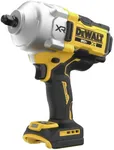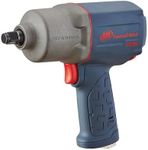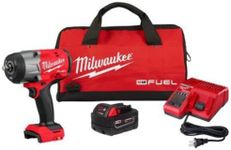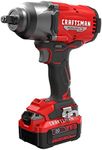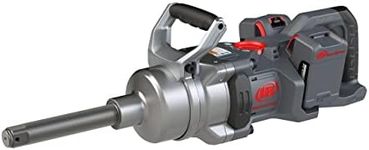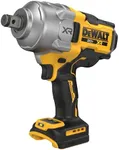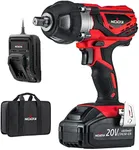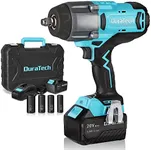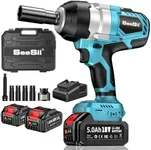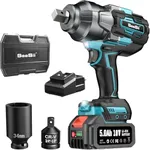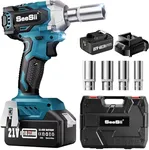Buying Guide for the Best Highest Torque Impact Wrench
Choosing the right impact wrench can make a significant difference in your work efficiency and ease. Impact wrenches are powerful tools used to tighten or loosen bolts and nuts with high torque. When selecting an impact wrench, it's important to consider several key specifications to ensure you get the best fit for your needs. Understanding these specs will help you make an informed decision and choose a tool that matches your requirements.TorqueTorque is the measure of the twisting force that the impact wrench can apply. This is crucial because higher torque means the wrench can handle tougher jobs, such as loosening stubborn bolts or working with heavy machinery. Torque is usually measured in foot-pounds (ft-lbs) or Newton-meters (Nm). For light-duty tasks, a torque rating of 100-200 ft-lbs may be sufficient. For automotive work, 200-400 ft-lbs is typically ideal. For heavy-duty industrial applications, you might need 400 ft-lbs or more. Consider the type of work you'll be doing to determine the appropriate torque level.
Drive SizeThe drive size refers to the diameter of the anvil where sockets are attached. Common sizes include 1/4-inch, 3/8-inch, 1/2-inch, 3/4-inch, and 1-inch. Smaller drive sizes (1/4-inch and 3/8-inch) are suitable for lighter tasks and tighter spaces, while larger sizes (1/2-inch and above) are better for heavy-duty applications. Choose a drive size that matches the sockets you already have or the type of work you plan to do.
Power SourceImpact wrenches can be powered by electricity (corded or cordless), air (pneumatic), or hydraulics. Corded electric wrenches offer consistent power but require an outlet. Cordless models provide mobility and convenience but depend on battery life. Pneumatic wrenches are powerful and commonly used in professional settings but require an air compressor. Hydraulic wrenches are used for very heavy-duty applications. Consider where and how you'll be using the wrench to choose the best power source for your needs.
SpeedSpeed, measured in revolutions per minute (RPM), indicates how fast the wrench can turn. Higher speeds can make quick work of tasks but may be harder to control. Lower speeds offer more precision. For general use, a speed range of 2,000-3,000 RPM is common. If you need more control for delicate tasks, look for models with adjustable speed settings.
Weight and ErgonomicsThe weight and design of the impact wrench affect how comfortable it is to use, especially for extended periods. Lighter models are easier to handle and reduce fatigue, while heavier models may offer more stability and power. Ergonomic designs with comfortable grips and balanced weight distribution can make a big difference in usability. Consider how long you'll be using the wrench and choose a model that feels comfortable in your hands.
DurabilityDurability is important to ensure your impact wrench can withstand regular use and tough conditions. Look for models made from high-quality materials like steel or reinforced composites. Check for features like impact-resistant housing and robust internal components. If you plan to use the wrench frequently or in demanding environments, investing in a durable model will save you money and hassle in the long run.
